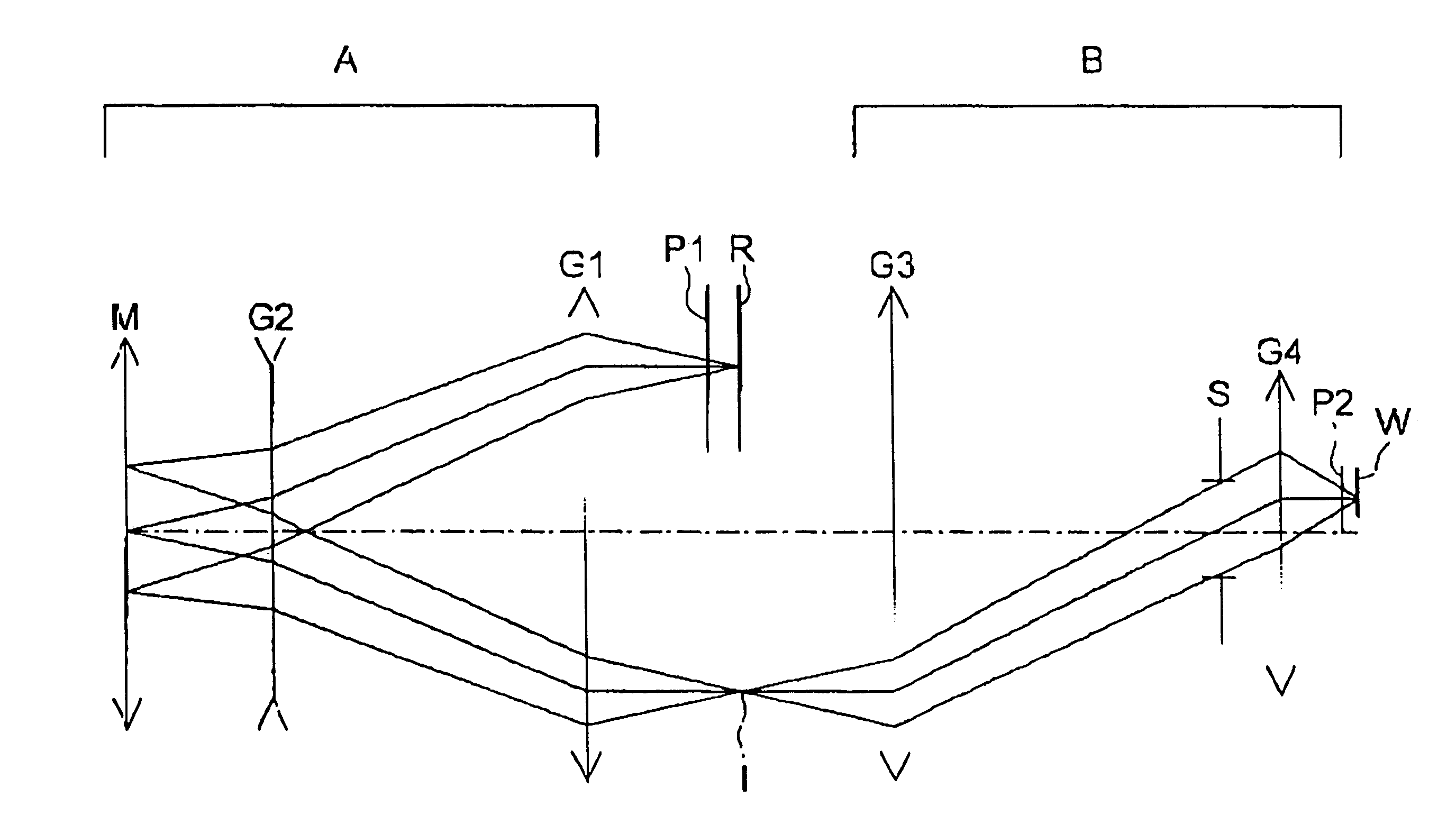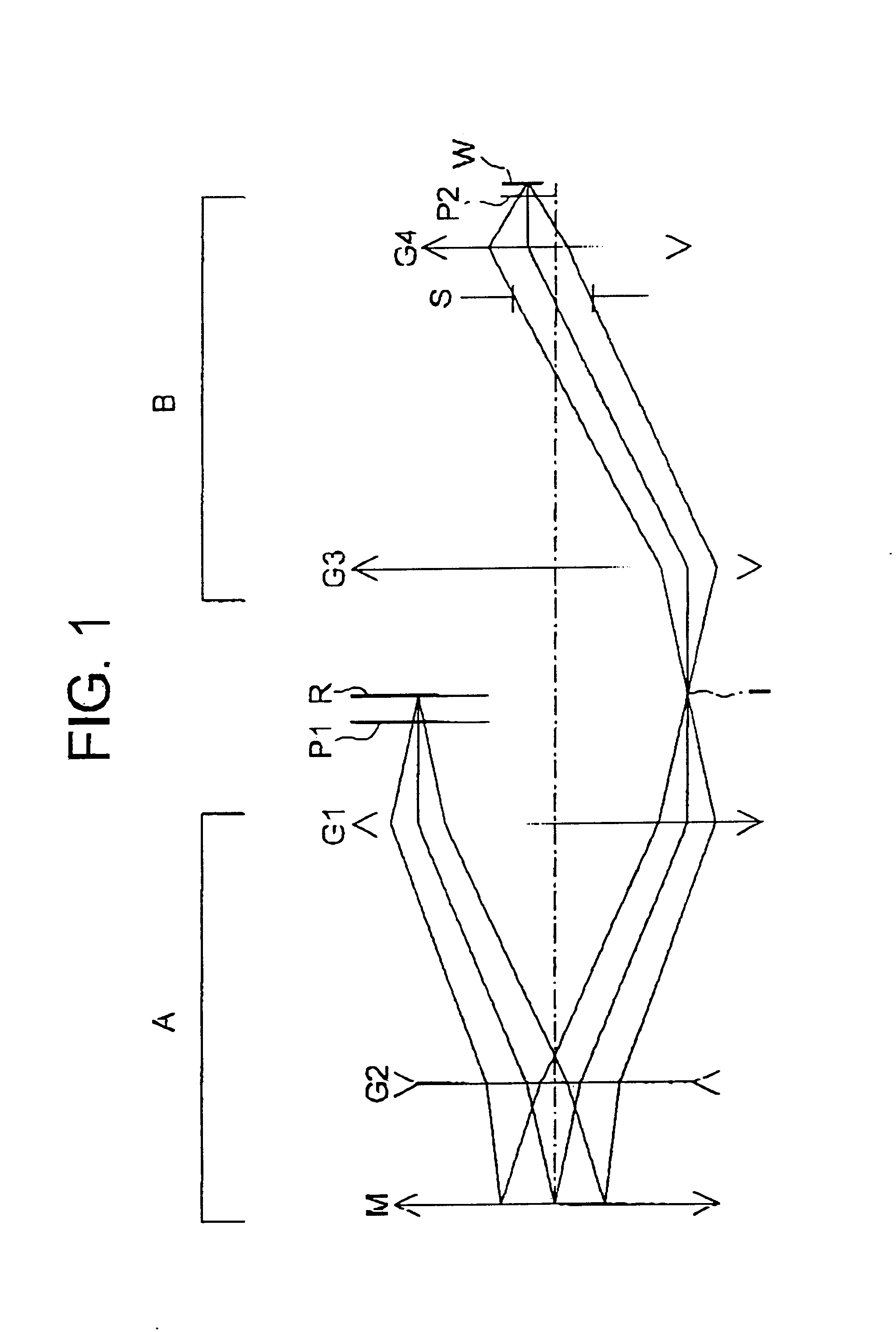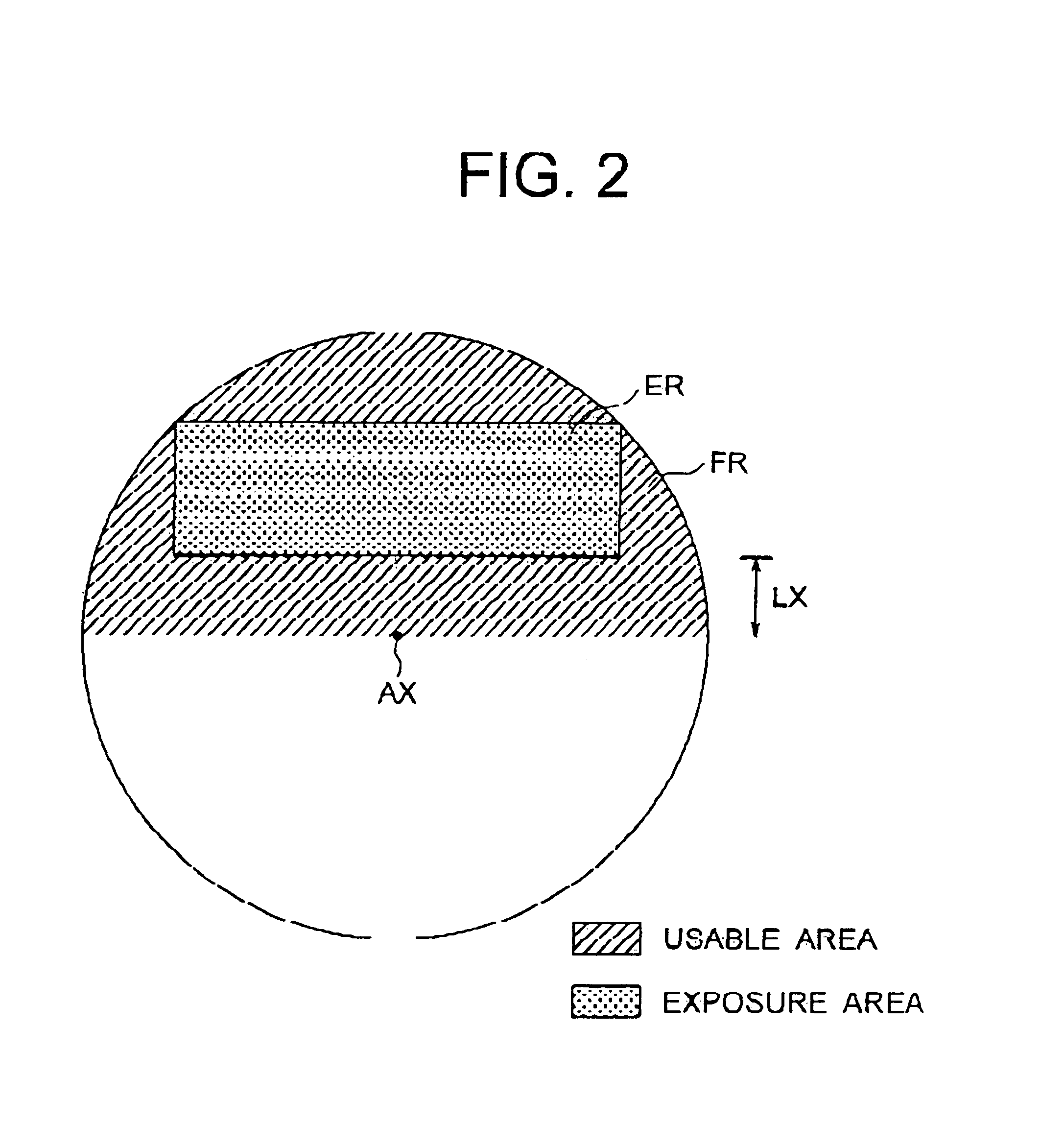Projection exposure apparatus, projection exposure method and catadioptric optical system
- Summary
- Abstract
- Description
- Claims
- Application Information
AI Technical Summary
Benefits of technology
Problems solved by technology
Method used
Image
Examples
first embodiment and second embodiment
FIG. 3 is a view showing an outline of a whole construction of the projection exposure apparatus in first and second embodiments of the present invention. Incidentally, referring to FIG. 3, the Z-axis is set in a direction of normal line of the wafer surface, the X-axis is set in parallel to the sheet surface in FIG. 3, and the Y-axis is set perpendicularly to the sheet surface. Referring again in FIG. 3, the direction of gravity is the same as the direction of the Z-axis.
In the projection exposure apparatus illustrated therein, beams emitted in the Z-direction from the F.sub.2 laser 1 (of which an oscillation center wavelength is 157.6 nm), are deflected in the X-direction by a deflection mirror 2, and thereafter a mask 4 is uniformly illuminated with these deflected beams through an illumination optical system 3.
Note that only the single deflection mirror 2 is illustrated in the optical path from a radiation source 1 down to the illumination optical system 3 in FIG. 3, however, in...
first embodiment
FIG. 4A shows a layout of the lenses of the projection optical system in a first embodiment, and is a sectional view taken along the plane perpendicular to the mask surface (object surface), including an optical axis connecting a concave reflecting mirror M2 to the wafer surface (image surface). Further, FIG. 4B corresponds to FIG. 4A and is a sectional view taken along the plane parallel to the mask surface, including the optical axis connecting the concave reflecting mirror M2 to the wafer surface (image surface). In FIG. 4B, however, for simplifying the illustration, the reflecting mirror M1 is omitted, and the optical paths from the reflecting mirror M1 to the mask R (corresponding to the reference numeral 4 in FIG. 3), are developed on the sheet surface. In the first embodiment, the present invention is applied to the projection optical system in which the variety aberrations containing the chromatic aberration are corrected with respect to the exposure radiation of which the c...
second embodiment
FIG. 7A shows a lens layout of the projection optical system in a second embodiment, and is a sectional view taken along the plane perpendicular to the mask surface (object surface), including the optical axis which connects the concave reflecting mirror M2 to the wafer surface (image surface). Further, FIG. 7B corresponds to FIG. 7A and is a sectional view taken along the plane parallel to the mask surface, including the optical axis connecting the concave reflecting mirror M2 to the wafer surface (image surface). Referring to FIG. 7A, however, for simplifying the illustration, the reflecting mirror M1 is omitted, and the optical paths extending from the reflecting mirror M1 down to the mask R are developed on the sheet surface. In the second embodiment, the present invention is applied to the projection optical system in which the various aberrations including the chromatic aberration are corrected for the exposure radiation of which the center wavelength is 157.6 nm and the full ...
PUM
 Login to View More
Login to View More Abstract
Description
Claims
Application Information
 Login to View More
Login to View More - R&D
- Intellectual Property
- Life Sciences
- Materials
- Tech Scout
- Unparalleled Data Quality
- Higher Quality Content
- 60% Fewer Hallucinations
Browse by: Latest US Patents, China's latest patents, Technical Efficacy Thesaurus, Application Domain, Technology Topic, Popular Technical Reports.
© 2025 PatSnap. All rights reserved.Legal|Privacy policy|Modern Slavery Act Transparency Statement|Sitemap|About US| Contact US: help@patsnap.com



